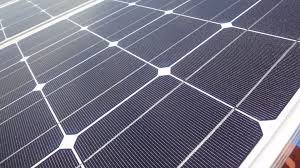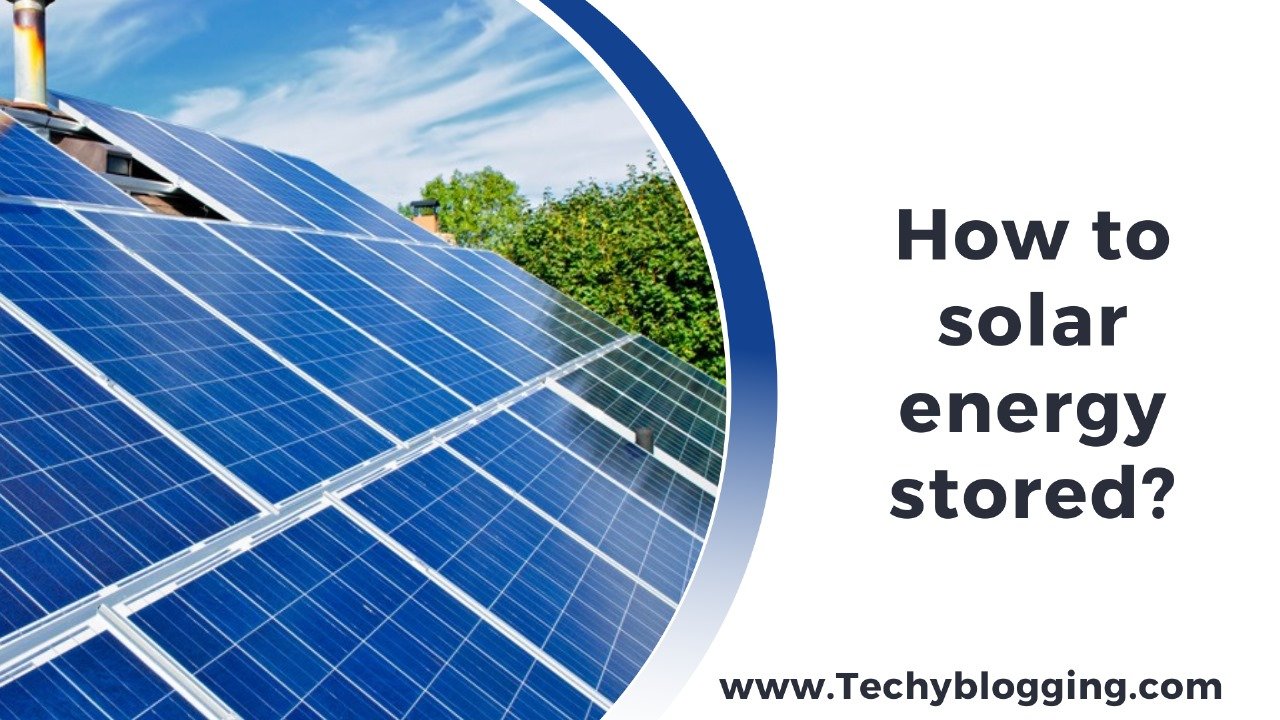Solar energy is among the most exciting renewable sources of energy, harnessing sun’s power to produce heat and electricity. But, one problem in solar power is its erratic nature. The sun does not always shine. To maximize the use of this source, dependable energy storage systems are crucial. This article explains how the solar power is store and the technology used, and the potential of storage for solar energy.
Understanding Solar Energy
What is Solar Energy?
Solar energy comes from the sun, and is convert to energy or heat. This process occurs using two techniques that include photovoltaic (PV) systems that utilize solar panels that convert sunlight directly to electrical energy as well as solar thermal systems which absorb heat generated by sunlight to generate steam to drive turbines.
The Need for Energy Storage
The problem with solar energy is in its fluctuation. Solar panels generate electric power during the day however, energy consumption usually is highest during the evening. Storage systems for energy can bridge the gap and allow extra energy that is generated in sunny times to be stored for use in times when the sun isn’t shining.
Types of Energy Storage Systems

1. Battery Storage
Lithium-Ion Batteries
Lithium-ion batteries are among the most popular form of energy storage used to store solar power. They are extensively use in commercial and residential solar panels due to their effectiveness, small dimensions, and decreasing costs. Store solar energy produced during the day. They can be utilize to power the night, or in times with low sun.
Lead-Acid Batteries
Lead-acid batteries are a different option that is typically utilize for off-grid solar systems. Although they’re less expensive than lithium-ion battery, they are less durable and have less energy density, which makes they less effective to store long-term data.
2. Pumped Hydro Storage
Pumped Hydro Storage is a established method of storing huge quantities of energy. This method makes use of surplus power to push water upwards into an accumulator. If energy is require then the water flows into the valley through turbines that produce electric power. Although highly efficient, pumped hydro needs specific geographic conditions and therefore is not appropriate in urban environments.
3. Compressed Air Energy Storage (CAES)
CAES is a process that compresses air within underground caverns in times of excessive energy production. In times of energy demand it gets heated before being expanded to power turbines and create electricity. This is a technology that is still under development, but could have potential for massive energy storage.
4. Thermal Energy Storage
The thermal energy storage systems absorb the solar energy and then store it for future usage. This is done together substances like molten salt and can hold energy for long time. If energy is required, this stored heat could be utilized to create steam to drive turbines. This technique is especially effective for CSP or concentrated solar power (CSP) plant.
5. Flywheel Energy Storage
The energy stored in flywheels is stored in the form of energy kinetic. Electricity generated from excess energy is used to turn a rotor very high speed. In the event that energy is required the motion of the rotor is transformed into electric power. Flywheels have a very high discharge rate, and they can react promptly to energy requirements which makes them appropriate to ensure grid stability.
Factors Affecting Energy Storage
Efficiency
Efficiency of any energy storage device is an important factor to the viability of the system. This is measured by the amount of energy that is saved, and later recovered. In the case of lithium-ion batteries, for instance, they typically operate at approximately 90%. In contrast, lead acid batteries can only achieve 70 to 80%.
Cost
The price of technology for energy storage is decreasing in the past 10 years. Prices for lithium-ion batteries, as an example, have fallen substantially, making them suitable for both commercial and residential applications. But upfront costs could present a challenge for some buyers.
Lifespan and Maintenance
The life span of energy storage systems is influenced depending on the type of technology. The lithium-ion battery typically lasts for 10-15 years. Lead-acid batteries can require replacement after 3 to 5 years. It is essential to maintain them regularly in order to warrant maximum performance, specifically in systems such as compressed air and pumped hydro storage.
Applications of Solar Energy Storage
Residential Solar Systems
For residential solar systems batteries allow homeowners to increase their energy independence. In addition to storing the excess energy produced by the sun during the day homeowners are able to use solar energy at night which reduces dependence on the grid while significantly reducing electricity bills.
Commercial and Industrial Use
Many businesses are embracing solar energy storage to reduce energy consumption and warrant an uninterrupted power supply. In storing energy in off-peak times, businesses can save excessive electricity costs at times of high demand.
Grid Stabilization
Energy storage plays a crucial function in the stabilization of grids. With the increasing number of renewable energy sources that are integrated into grids storage system loated tea recipe to balance demand and supply and reduce the possibility of blackouts, and increasing grid reliability.
Future Trends in Solar Energy Storage
Advancements in Battery Technology
The research is continuing in order to increase batteries in addition to lithium-ion. These include solid-state batteries that promise better energy density as well as safer use. This technology could transform solar storage for energy, offering more long-lasting and better-performing options.
Integration of Smart Grids with Smart Grids
Solar energy storage’s future is connected to the creation and deployment of grids that are smart. These systems make use of advanced technologies for optimizing the distribution of energy and its consumption. Through the integration of solar storage into smart grids, energy consumption can be more energetically managed and efficiently, making the most of renewable energy sources.
Policy and Incentives
Incentives and policies from the government can play an important role in the development the use of storage systems for energy from solar. In the future, as more countries adopt policies that are supportive and provide incentives to finance the installation of storage for energy will likely to increase which will make solar energy an better feature with a greater number of people.
Conclusion
The storage of solar power is essential in maximizing the power of this energy source. With a myriad of storage technology options that each have their distinct advantages and drawbacks and challenges, the outlook for solar energy in the future is promising. With technological advancements continuing and the cost of solar energy storage could become more important in creating a more sustainable energy system. Incorporating these technologies won’t just increase your energy independence, but it will can also loated tea recipe create a healthier more sustainable and eco-friendly planet.




